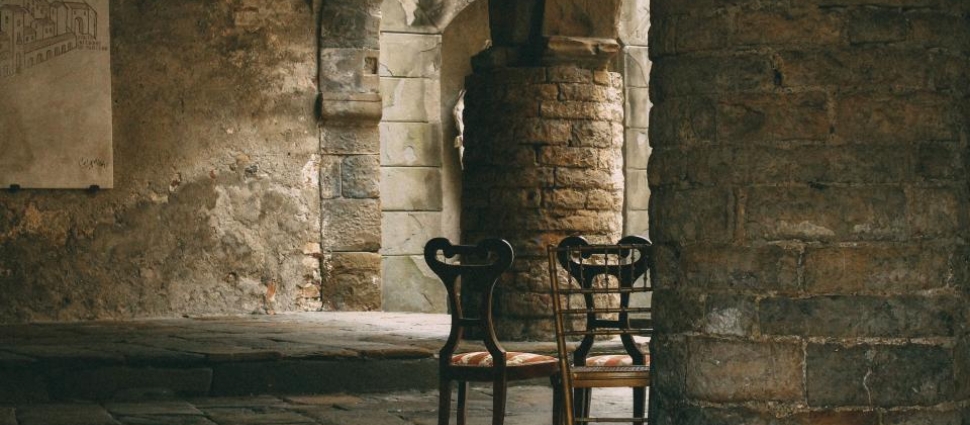Hannah Marshman – A Pillar of the Serampore Mission

Hannah Marshman – A Pillar of the Serampore Mission
Did Hanna Marshman know, when she left England for India, how much the missionary community would depend on her for wisdom and strength? It’s hard to imagine what she expected to do or find. As one of the first female missionaries, she had few role models to emulate.
Today, most Christians recognize the importance of William Carey in the history of missions. Many are also aware of the value of his closest companions – Joshua Marshman and William Ward. The three are commonly known as “the Serampore Trio.”
Yet few are aware of the role of Hannah Marshman, Joshua’s wife, on keeping sanity and stability in the Serampore mission.
Hannah’s Youth
Hannah was born on May 13, 1767 to John Shepherd, a landowner, and Rachel Clark Shepherd. Rachel, daughter of the Baptist pastor John Clark, died when Hannah was only eight, leaving an indelible example of devotion and prayer.
“When at the early age of eight years I saw her lovely countenance silent in death,” Hannah remembered, “her tender and affectionate words rushed upon me. I endeavoured to recollect them; and though unconscious of the loss I had sustained, prayed that God would be my God: and I think he heard my prayer.”[1]
John Shepherd never recovered from the loss of his wife. His health became seriously compromised, and he died three years later.
Hannah then moved to Wiltshire to live with her maternal grandfather, who saw to it that she received a thorough education. Hannah grew healthy until she was fifteen. Then her health began to fail – so much that her friends often wondered if she would survive.
She recovered after two or three years. Later in life, she told her children that time of illness was actually the happiest of her life, because she learned to see God as a loving Father. Soon after her recovery, she made a public profession of faith and was baptized.
Mother of the Mission
Hannah was seventeen when she met her future husband, a weaver named Joshua Marshman. They married in 1791 and moved to Bristol. Together, they had twelve children, although six died as infants.
Hannah encouraged her husband’s desire to be a schoolteacher and preacher and objected strongly to his temporary idea of emigrating to North America. When her husband received a call to move to India to assist William Carey in his mission, Hannah, like Dorothy Carey, was initially hesitant. Unlike Dorothy, however, she didn’t make an impulsive decision. She took her time, until she was finally persuaded of the need for missionary work.
In May 1799, Hannah, Joshua, and their son John left from Portsmouth for India, aboard the ship Criterion. The 20-week journey was difficult for Hannah, who was pregnant. They arrived in October and established themselves in Serampore, a Danish colony. Carey and his family joined them in January 1800, together with John Fountain, a teacher, and his wife Mary. Soon two more missionaries, William Ward and William Grant arrived from England, but both Grant and Fountain died soon after.
With Dorothy Carey battling a serious mental illness and Mary Fountain grieving the death of her husband while bearing a child, Hannah found herself in the role of a mother for the missionary community of ten adults and nine children who, following the example of the Moravian missionaries, had decided to live together. Besides caring for the two women, she managed the mission’s homework and administration, kept up its correspondence with supporters, and took on the challenging task of educating Carey’s undisciplined four sons who had been long neglected. (After giving birth to her child, Mary decided to stay in India and married William Ward).
Joshua Marshman and William Ward also provided invaluable care for the Carey boys, taking on a role of uncles and mentoring them. This care proved to be especially important for Felix, the oldest of the Carey children, who was undergoing a period of teenage confusion. Later, William Ward’s mentoring played a valuable role in the life of John Marshman, Joshua and Hannah’s oldest son, when he reached the same crucial age.
All this was done in a foreign environment, marked by frequent illnesses, faulty building structures, and unfamiliar hazards. “Very narrowly escaped the bite of a snake while crossing the yard,” she wrote in her journal. “How good is God to one so vile, unworthy of thy love and care, and yet thou keepest me by night and day.”[2]
A Passion for Education
While carrying this heavy load, Hannah continued to be involved in missionary work. In May 1800, she and her husband opened two boarding schools for English children (one for girls and one for boys) and a free school for Indian children. The boarding schools provided a source of income which allowed other missionary enterprises. The free school was the first of its kind, especially for Indian girls, who didn’t traditionally receive an education.
In a letter to the Baptist minister John Ryland, Joshua Marshman wrote, “My dear partner is very happy in her employ, although the school, together with the case of her family, and learning Bengali, for which her desires are scarcely less ardent than my own, render her life very laborious.”[3]
Education was Hannah’s passion. “To me, there is no employment equally pleasant as that of teaching children,”[4] she wrote. But, before starting, she had counted the cost to make sure she could manage it, and was able to free herself from other duties.
“Through mercy I have not repented,” she said, “and I hope I never may. I am not worthy to be employed in everything belonging to Christ, and often wonder at the dispensations of God in sending me to this land, where so much grace is needed, and my daily experience is such that I often fear lest I have none. This however I know, I long for the increase of Christ’s kingdom upon earth, especially in this benighted part of it.”[5]
Understandably in the case of a woman who had carried so much weight on her shoulders, passing on some of her responsibilities to newly-arrived missionary wives was not always easy. In some cases, they didn’t meet her standards, but she strove to adapt. “The dress of these new sisters staggers me,” she wrote once, “but God looketh at the heart, no doubt they are like the King’s daughters all glorious within.”[6]
“I acted according to the ability that God has given me,” she said, “but two will be better than one, because they have a good reward for their labour. I have beaten the track, and laid something of a foundation, and now if God should see fit to take from me my stewardship and give it to another more worthy, I must submit.”[7]
Eventually, Hannah established twelve girls’ schools in Serampore and more around the region. This was part of a larger effort by the Serampore missionaries to found schools all over the country (by 1818, 126 were established in all).
She died on March 5, 1847, ten years after her husband. Her son John, who wrote a history of the Serampore Mission, described her as “a woman of feeling, piety and good sense, of strong mind and great disinterestedness, fitted in every respect to be an associate in the great undertaking to which the life of her husband was devoted — and withal so amiable a disposition that nothing was ever known to have ruffled her temper.”[8]
At least part of Hannah’s life was described in fuller details by her daughter Rachel Voigt, in her Memoir of Mrs. Hannah Marshman’s Earlier Years[9]. In it, she remembers her father explaining, “Your dear mother, from love to the Redeemer, gave up all for the sake of His cause in India.”[10] And Hannah’s journals and letters reveal a woman who continued to give up all until the end.
[2] Quoted in Sutapa Dutta, British Women Missionaries in Bengal, 1793-1861, London, Anthem Press, 2017, 68
[3] Ibid, 71
[4] Ibid., 68
[5] Ibid., 68
[6] Ibid, 74
[7] Ibid, 74
[8] John Clark Marshman, The Life and Times of Carey, Marshman, and Ward: Embracing the History of the Serampore Mission, vol, 1, London: Longman, Brown, Green, Longmans & Roberts, 1859.
[9] Held in microfilm at Angus Library, Angus, Canada
[10] Quoted in Dutta, British Women Missionaries in Bengal, 67





